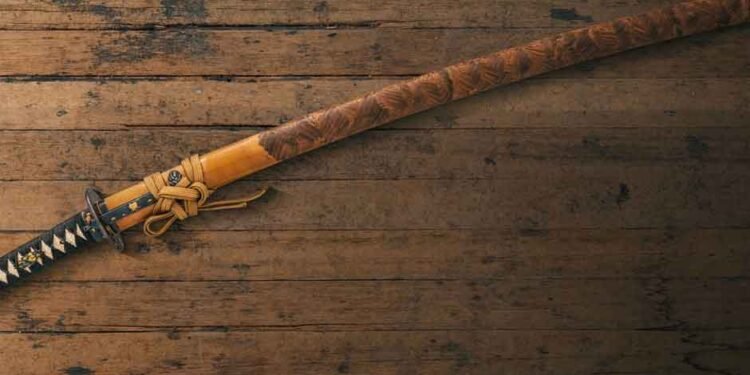The Japanese samurai sword, a symbol of the warrior tradition, is revered for its beauty, craftsmanship, and history. These swords, known as katanas, are not just weapons but are considered works of art and cultural heritage.
Origins and Evolution
The samurai sword dates back to the Heian period, evolving from straight blades to the curved design we recognize today. This evolution was influenced by the need for more efficient weapons during the feudal conflicts in Japan.
The samurai sword, also known as the katana, has a rich history that traces back to Japan’s Heian period (794-1185 AD). Initially, these swords were straight and were heavily influenced by the designs of Chinese and Korean weapons. However, as Japan entered a period of continuous feudal warfare, known as the Kamakura period, the design of these swords began to evolve significantly.
This evolution was driven by the practical needs of samurai warriors. The curved blade, which developed around the late 10th century, proved to be more effective in combat. The curvature allowed for a quicker and more efficient drawing of the sword, which was crucial in battle. It also facilitated a smoother, more precise cutting motion, making it deadlier in close combat.
The process of forging these swords was intricate and steeped in tradition. Japanese swordsmiths were highly regarded for their skills and were considered both craftsmen and artists. The method involved repeatedly heating, hammering, and folding the steel, which resulted in strong, sharp blades with a distinctive pattern. This labor-intensive process also imbued each sword with a unique character.
Over time, the samurai sword became more than just a weapon; it turned into a symbol of the samurai’s honor, discipline, and moral code. The aesthetics of the sword also evolved, with elaborate decorations and intricate designs on the tsuba (hand guard), tsuka (handle), and saya (scabbard).
Throughout the centuries, as Japan underwent various political and social changes, the significance and use of the samurai sword adapted. However, its symbolic importance and representation of the samurai spirit have endured, making it an iconic element of Japanese culture and history.
The Katana: A Symbol of the Samurai
The katana is the most famous type of samurai sword, known for its distinctive curved blade. It was the primary weapon of the samurai, Japan’s medieval warrior class. The crafting of a katana involved a complex process of heating, folding, and hammering, making each sword unique.
Craftsmanship and Technique
The creation of a samurai sword is an art form, requiring skill and precision. The swordsmiths were highly respected artisans, and their techniques were closely guarded secrets. The swords were made from high-quality steel, folded multiple times to create layers that offered strength and flexibility.
Cultural Significance
Samurai swords hold a significant place in Japanese culture. They were more than just weapons; they symbolized the samurai’s honor, bravery, and moral code known as Bushido. These swords were often passed down through generations as family heirlooms.
Modern Interest and Collecting
Today, the fascination with samurai swords continues. Collectors and enthusiasts seek out antique swords for their historical and artistic value. Additionally, there are katana for sale that are modern reproductions, appealing to those interested in martial arts or Japanese culture.
Legal Aspects and Preservation
In Japan, the possession and sale of samurai swords are regulated to preserve these historical artifacts. Swordsmiths must be licensed, and there are strict laws regarding the export of antique swords. These regulations ensure the preservation of these cultural treasures for future generations.
Conclusion
The Japanese samurai sword is more than just a piece of weaponry; it’s a symbol of a rich historical tradition and a testament to the skill of Japanese artisans. Whether you’re a collector, a martial arts enthusiast, or simply fascinated by Japanese culture, the allure of the samurai sword is undeniable. For those interested, finding a katana for sale offers a unique opportunity to own a piece of this storied history.












